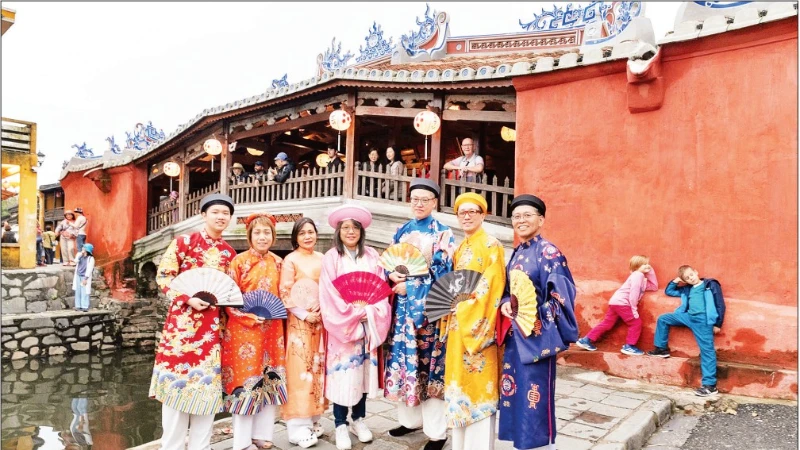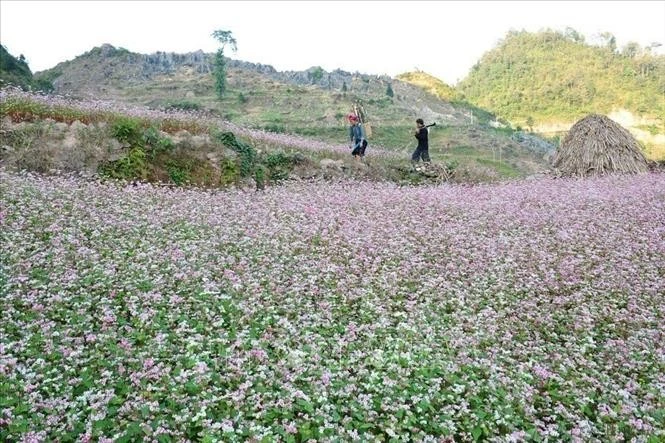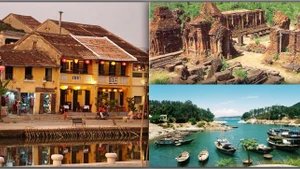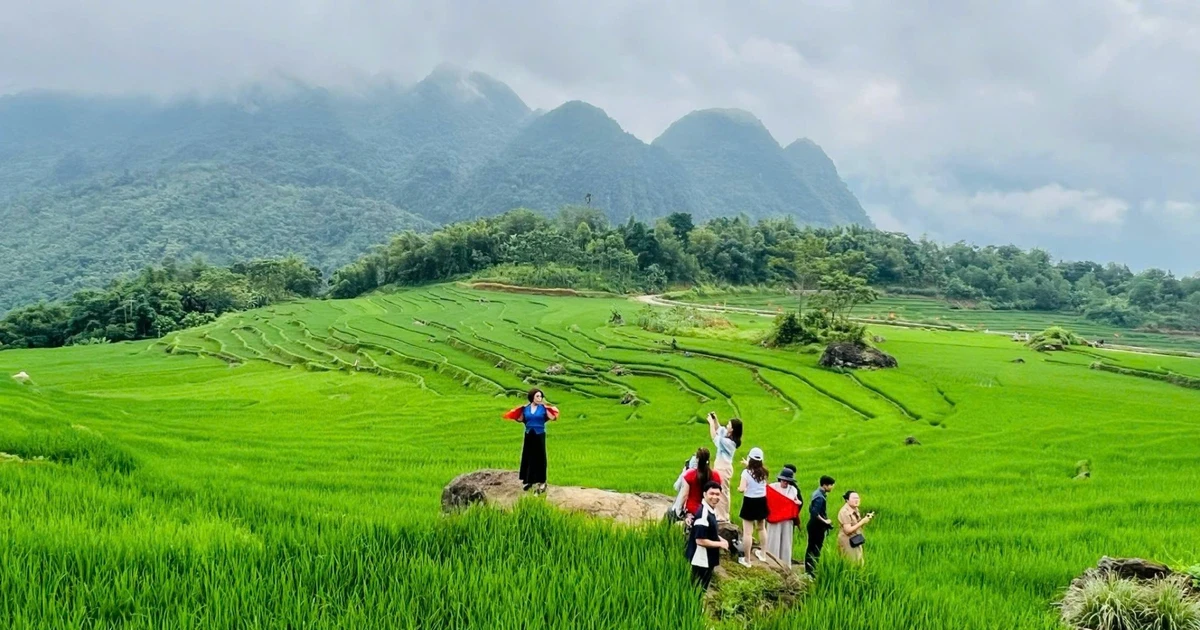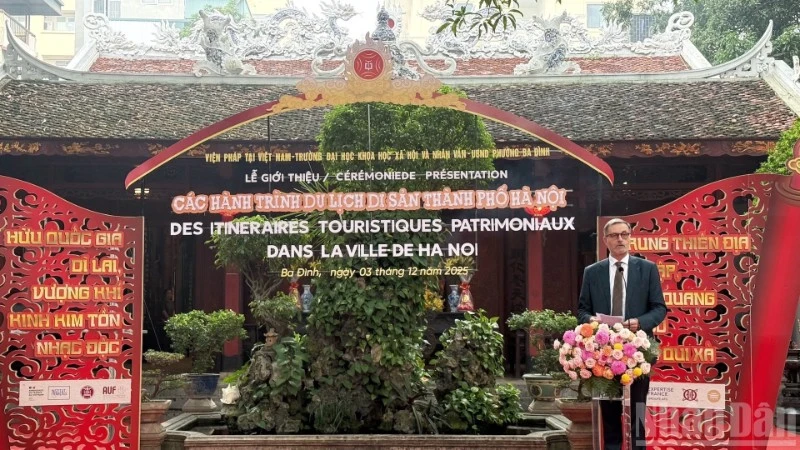Their goal is to turn tourism into a spearhead economic sector, contributing to local socio-economic development.
Situated amid vast forests along the Gam and Nang rivers, the Na Hang-Lam Binh Nature Reserve boasts a diverse ecosystem with many rare species of flora and fauna, fascinating caves, dreamy waterfalls, enchanting natural landscapes, fresh air, and unique cultural practices of ethnic minorities such as the Tay, Dao, H’Mong, and Pa Then. The reserve spans several communes: Lang Can, Khuon Ha, Thuong Lam, and Phuc Yen (Lam Binh District), as well as Nang Kha, Thanh Tuong, Son Phu, Hong Thai, Thuong Nong, Thuong Giap, Yen Hoa, Con Lon, Sinh Long, and Khau Tinh, along with Na Hang Town (Na Hang District).
According to Dinh Tra My, a tour guide at the Na Hang-Lam Binh Nature Reserve, visitors should not miss the opportunity to take a boat trip on the Tuyen Quang hydropower reservoir, with over 8,000 hectares of water surface. Here, they can immerse themselves in the vastness of nature, surrounded by mountains and rivers, while listening to legends tied to local landmarks. Along the way, visitors can also stop at Mo Waterfall, recognised as a national scenic spot.
The primary forests here feature thousand-year-old ironwood trees and the critically endangered snub-nosed monkeys listed in the Red Book of Endangered Species. Sailing along the river from Thuong Lam Commune in Lam Binh District, amidst majestic mountain and river landscapes, visitors will encounter the “coc Vai” rock pillar (meaning buffalo tethering post in the Tay language), associated with the legend of Tai Ngao. From the confluence of the Gam and Nang rivers, the area unfolds into a breathtaking landscape of rivers, mountains, and ancient trees reflecting in the water.
Nguyen Hong Quang, a tourist from Bac Tu Liem District, Hanoi, expressed his amazement and awe at the pristine beauty of the primaeval forests, cascading waterfalls, and the fresh, cool climate during his visit to the Na Hang-Lam Binh ecological tourism area. He also participated in a traditional raft race organised by the Tay ethnic people, describing it as an unforgettable experience.
The cultural tourism village of Na Tong, located in Thuong Lam Commune, Lam Binh District, is a popular destination for visitors. Nestled beside limestone mountain ranges and reflecting on the ecological lake of Na Hang-Lam Binh, the village features traditional stilt houses of the Tay people, which serve as homestays and provide visitors with a unique experience.
According to Hoang Van Minh, the owner of the Tai Ngao Homestay in Na Tong, every detail in his establishment, from bamboo cups to hangers, is designed to preserve the local tradition. To immerse guests in the local lifestyle, the homestay also organises community activities such as pounding sticky rice cakes, playing traditional games, cultural exchanges, campfires, bamboo dancing, listening to then singing, cycling around villages, and enjoying ethnic cuisine. On average, the homestay welcomes over 1,000 guests per month for stays and relaxation.
Le The Dat, Chairman of the Lam Binh District People’s Committee, stated that the district has focused on mobilising resources to invest in tourism infrastructure, such as transport systems, wharves, and cultural tourism villages. Initial efforts have created distinctive tourist attractions and products, with nearly 60 households engaged in community-based tourism. Over 20 designated check-in points have been developed for visitors to explore and capture memorable photos. The district has partnered with over 200 travel companies to actively promote tourism and foster development collaborations.
To Viet Hiep, Chairman of the Na Hang District People’s Committee, added that the district will continue implementing Resolution No. 35 by the Standing Committee of the District Party on developing tourism as a vital economic sector in the 2021-2025 period. Activities will include professional tourism promotion, inviting expert consultation for sustainable development, and effectively utilising the scenic and cultural heritage of the Na Hang-Lam Binh Nature Reserve. With eco-tourism at its core, the district aims to expand its offerings, including resort tourism, forest ecotourism, spiritual tourism, and community-based tourism, while preserving and promoting the rich cultural heritage of local ethnic groups.
By 2025, the goal is to position the Na Hang-Lam Binh scenic reserve as a nationally recognised hub for eco-tourism, community-based, and exploratory tourism, ultimately building an international reputation.
From the beginning of the year, the Na Hang and Lam Binh districts have attracted over 552,000 visitors, generating more than 677 billion VND in revenue. By 2025, they aim to welcome over 550,000 tourists annually (350,000 for Na Hang and 200,000 for Lam Binh) with revenue exceeding 770 billion VND (430 billion VND for Na Hang and 340 billion VND for Lam Binh).








